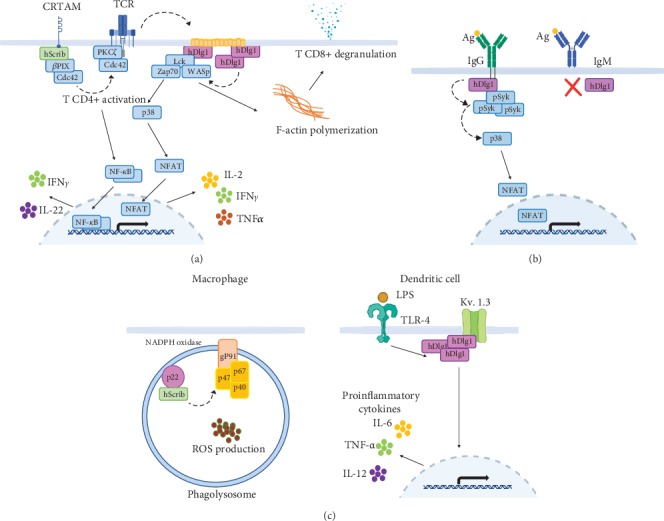Figure 3.

The Scribble complex in immune cells. (a) Some functions of hScrib and hDlg1 during T cell activation are illustrated. TCR stimulation induces the interaction of hScrib with CRTAM; in turn, Cdc42 and PKCζ are recruited to the TCR to regulate IFNγ and IL-22 secretion. hDlg1 is constitutively found in lipid rafts (orange) associated with Lck, Zap70, and WASp. After TCR stimulation, additional hDlg1 molecules are recruited, activating the p38 MAPK/NFAT pathway to induce cytokine production. Additionally, F-actin polymerization mediated by WASp within the same complex is involved in T cell degranulation. (b) hDlg1 regulates B cell memory responses. The PDZ-dependent interaction of hDlg1 with the BCR IgG is increased upon Ag recognition leading to pSyk recruitment and p38 MAPK activation stabilizing IgG signaling. (c) hScrib and hDlg1 regulate APC functions. In Mϕ (left), hScrib is necessary for the assembly of the NADPH oxidase complex and ROS production. In DCs (right), hDlg1 participates in cytokine production upon TLR stimulation through the stabilization of potassium channel expression on the plasma membrane. Solid arrows represent signaling events while dashed arrows represent recruitment events (see text for details).
